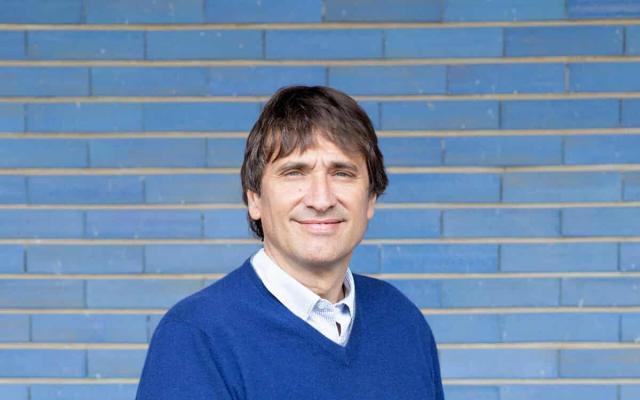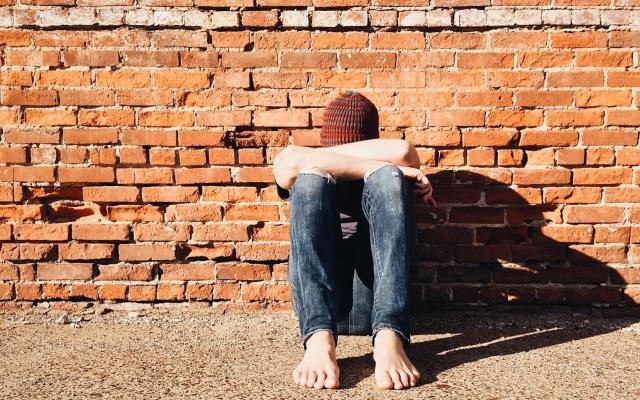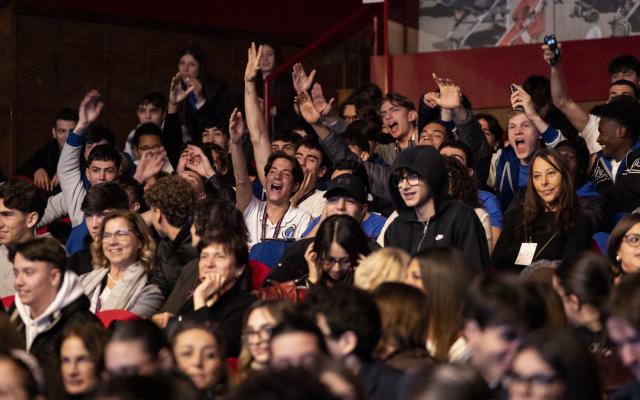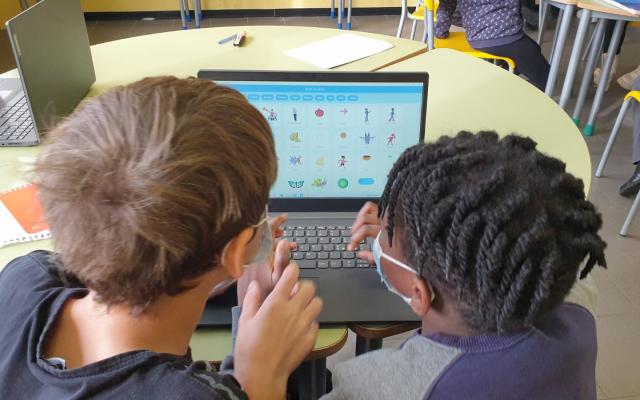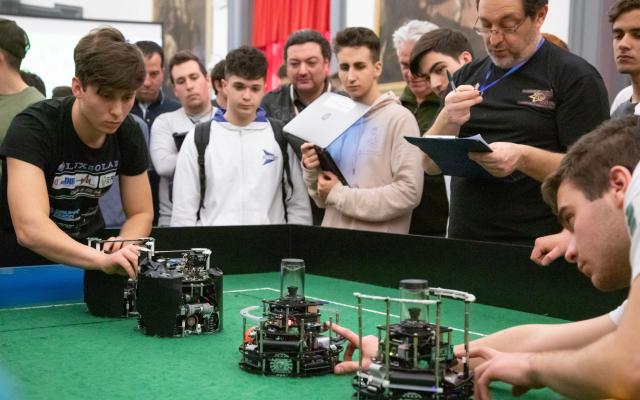With creative contests, schools and universities work together to build the future
For the second year, Dronebot, the competition that tests creativity, technical skills and the ability to work in a team, is among the creative contests of the RomeCup. The challenge takes place in a flight area set up at the University of Roma Tre, where teams of students, under the guidance of professors and university students, must face a complex and highly educational mission.
The challenge: drones and rovers in action
The competition involves the use of a drone equipped with a camera, which must be piloted manually within an environment with obstacles. The competition field is characterised by a surface on which the image of a fire is printed. The first objective is that the software, developed entirely by the students, is able to automatically identify the image of the fire using object detection techniques (automatic recognition of objects within an image).
To ensure greater autonomy of the teams in the design, the use of proprietary software is not allowed: the recognition code must be written or integrated directly by the participants.
Once the ‘fire’ has been identified, the drone must return to base and focus on a remote-controlled rover, on which an ArUco marker is positioned (a visual code that allows the drone to recognise and track the ground vehicle). At this point, the challenge becomes even more complex: the rover must be guided automatically to the area designated as the ‘fire zone’, using only the data received from the drone's camera.
The competition ends when the rover completely reaches the target area, stopping the stopwatch. The winning team is the one that completes the entire mission, from the drone's take-off to the rover's entry into the target area, in the shortest possible time. Each team has two drone batteries or a maximum time of 30 minutes to perform all the necessary attempts.
Technical constraints and available tools
To make the competition more stimulating and challenging, strict technical constraints have been introduced:
- The rover must be guided by a semi-automatic system, without direct intervention by the students, and the only source of information for navigation must come from the drone's camera.
- The competition field is surrounded by a safety net and has a landing pad for the drone, as well as a starting area for the rover.
- Each team can use a computer to process the images captured by the drone (via smartphone or tablet) and implement the image recognition code.
- Small ‘hacks’, such as modifying a radio-controlled (RC) remote control to optimise rover control, are allowed.
An educational project with academic support
The institutes involved in this edition are Aslam in Samarate (Varese), Enzo Ferrari in Rome, Vito Volterra in Ciampino, G.B. Vaccarini in Catania and Giovanni XXIII in Rome. Once again this year, the competition is led by Daniele Carnevale, professor of robotics and automation at the Department of Civil Engineering and Computer Engineering of the University of Rome Tor Vergata.
The collaboration is the result of the Smart & Heart Rome programme, created with Roma Capitale, which led to the creation of an indoor drone flight field at the Edoardo Amaldi high school in Rome, in the Tor Bella Monaca neighbourhood.
Consolidated experience in robotics contests
Recently, Professor Carnevale acted as mentor for the winning team of the Leonardo Drone Contest 2024, held at DronItaly, the main Italian event dedicated to drones and automation.
The team, led by Simone Mattogno and composed of PhD students Roberto Masocco, Lorenzo Bianchi and Alessandro Tenaglia, won first prize by taking on a highly advanced challenge: the autonomous navigation of a drone and a ground robot without the use of GPS, using instead a real-time obstacle mapping system. The experience confirms the importance of initiatives such as Dronebot, which allow students to develop advanced skills in the field of robotics, artificial vision and automation, bringing them closer to the technological challenges of the future.
THE INTERVIEW
Alberta Testa interviewed Daniele Carnevale to understand where his passion for computer engineering comes from.
‘I wanted to start a doctorate in robotics applied to surgery, but when I arrived in the USA, the robot I was supposed to work on was no longer there. So I focused on control processes in the fusion field. Today, however, we work with drones and rovers. I believe that automation has the power to make things work, and work well. It's this possibility of combining theory and practice that excites me. But the best thing is to see young people getting passionate about it, coming up with ideas and building together. Without them there would be a lack of motivation, a lack of future. And the future is built only by doing things together’.
What skills do you think are essential for those approaching robotics?
‘Robotics is not just about technology: it requires the ability to work in a team. In addition to technical skills, students develop soft skills that are essential for the workers of the future, such as communication, problem solving and time management. It's an environment that teaches collaboration, trusting others and finding creative solutions, cross-disciplinary skills that really make the difference’.
Do these initiatives also have a strong impact on educational orientation?
‘In 2022, at the Amaldi high school, we set up the first indoor drone flight camp in an Italian school. The experiment allowed us to bring the world of robotics and automation closer to the students. The result? Almost all of them are now enrolled at Tor Vergata, demonstrating how practical and stimulating experiences can positively influence the course of study and career choices of young people. It's a virtuous circle in which passion generates the future, creating new skills and human connections that enrich both the students and the world of research’.
What are the main applications of drones and rovers that you are working on?
‘The applications are increasingly diverse. In the agricultural sector, there is a great demand for drones for image analysis, but also for the maintenance of infrastructures such as electrical networks and dams. They are valuable tools for rescue in the event of natural disasters and, more recently, they are being used on construction sites to monitor worker safety, detect critical issues and measure sources of pollution or exposure to biological, chemical and nuclear risks. We are also developing new propulsion systems: together with the University of Cambridge we have started a project on variable geometry wings, which allow drones to change shape in flight, improving autonomy and reducing energy consumption. Finally, an important area is defence: we are collaborating with the Italian Air Force on anti-drone systems for airport security’ [for more information Futuro24: innovations from the world of engineering].

